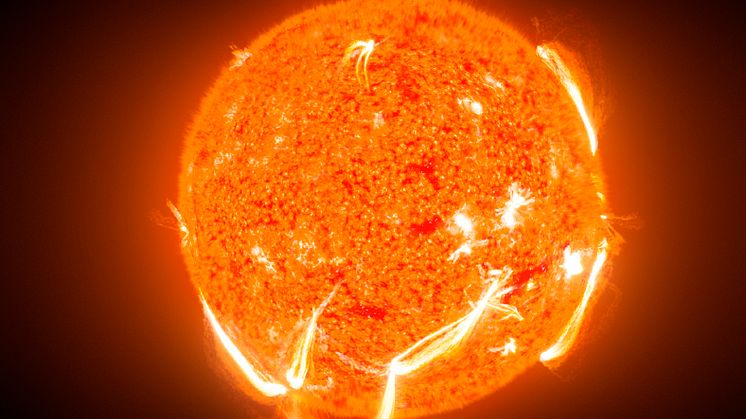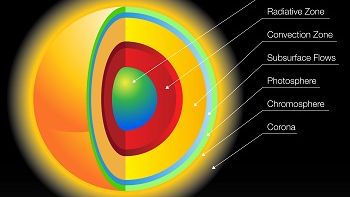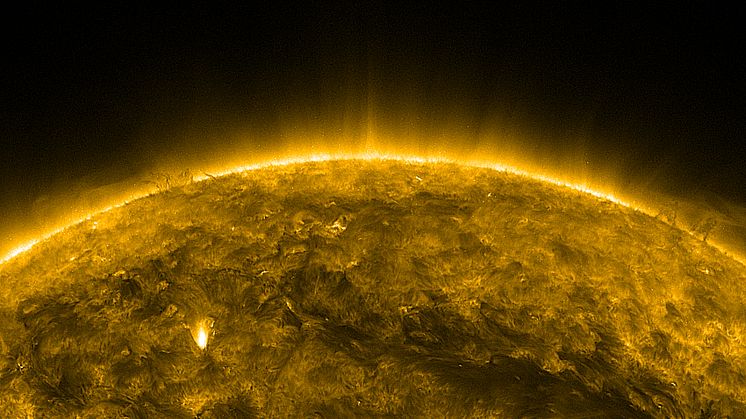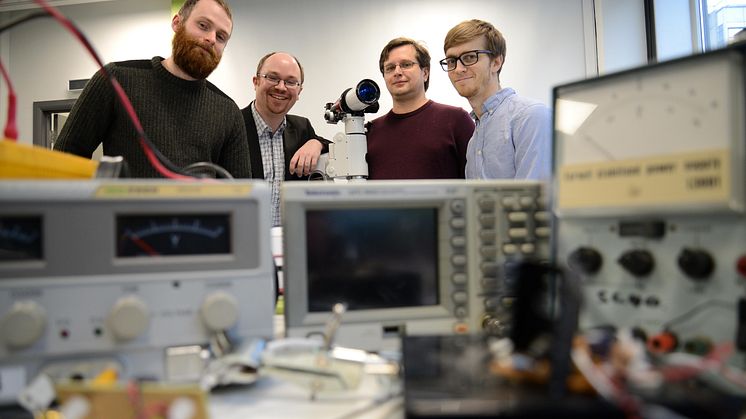
Press release -
Mysteries of the Sun unveiled
A Northumbria academic is helping to unravel one of the greatest mysteries in physics – why the Sun’s outer layer is many times hotter than its surface.
The corona has a temperature of one million degrees, compared to just 6,000 degrees on the Sun’s surface (the photosphere), despite the two only being a few hundred kilometres apart.
Now an international team of researchers, including Dr Eamon Scullion – a member of Northumbria’s Solar Physics research group, has made a new discovery, which could help explain the phenomenon.
Using the Swedish Solar Telescope located on La Palma in the Canary Islands, the team have been able to examine the movement of magnetic waves, known as Alfvén waves, to determine whether this movement is responsible for the Corona’s high temperature.
For the first time they have recorded the presence of high frequency, fast moving magnetic waves within specific areas known as ‘flux tubes’ which transfer energy into the corona. This not only results in the corona being heated to a very high temperature but is also the cause of solar wind, the results of which can be seen on earth through interference to electronic devices and the appearance of the Northern Lights.
Dr. Scullion said: “This new discovery provides a novel solution to the long-standing puzzle of the Sun's coronal heating. It allows us to understand the physics of the solar atmosphere and the energetic processes involved in the Sun’s make up in more detail.
“It opens up the possibility for further examination using high-tech solar telescopes, both in space and on the ground, including the four-metre Daniel K. Inouye Solar Telescope (DKIST) in Hawaii, which Northumbria University is helping to build through our expertise in the field of solar physics.
“DKIST will be able to pick up unprecedented detail on the Sun’s surface and Northumbria’s Solar Physics research group are playing a lead role in developing software to understand data from the telescope.”
The research team for this latest discovery was led by Dr. A.K. Srivastava from the Indian Institute of Technology and also included Professor Gerry Doyle and PhD student Juie Shetye of Armagh Observatory and Planetarium in Northern Ireland, Professor B.N. Dwivedi from the Indian Institute of Technology, Professor. K. Murawski and Dariusz Wojcik from the Maria Curie-Skłodowska University in Poland, Dr Marco Stangalini from the Istituto Nazionale Di Astrofisica in Rome and Professor Tom Ray from the Dublin Institute for Advanced Studies in Ireland, as well as Dr Scullion from Northumbria.
Dr Scullion added: “There is plenty of scope for further exploration in this area – Alfvén waves have been recognised as having potential impact on a number of fields including nuclear fusion research and black hole jets.
“We hope this research has gone someway to help explaining the heating of the corona and increasing our overall understanding of the Sun and its potential impact on Earth.”
Extreme Environments is one of Northumbria’s eight Multidisciplinary Research Themes. Researchers in this area are exploring conditions that challenge the existence of most known life forms on the Earth's surface, subsurface and oceans as well as its atmosphere and in the solar systems.
To find out more about Northumbria’s Mathematics, Physics and Electrical Engineering department and the courses available, visit https://www.northumbria.ac.uk/about-us/academic-departments/mathematics-physics-and-electrical-engineering/
The team’s findings have now been published on the journal Nature’s Scientific Reports website and can be read in full here.
Topics
Northumbria is a research-rich, business-focused, professional university with a global reputation for academic excellence. To find out more about our courses go to www.northumbria.ac.uk
If you have a media enquiry please contact our Media and Communications team at media.communications@northumbria.ac.uk or call 0191 227 4571.













